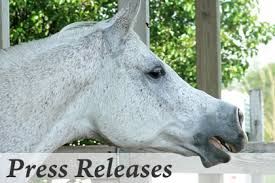Movies and TV’s Effect on Real-Life Horse Extractions
- Posted by Rebecca Gimenez Husted, PhD
The last approximately 100 years of motion pictures and video has profoundly influenced our societal considerations of how horses are rescued from emergency situations, both from the perspective of owner expectations for care, what appears to be “correct” techniques, tactics, and procedures (TTP), and most especially for concerns of animal welfare.
Although these media have increased our understanding of the variety of animals that occur across the earth, some demonstrations and live rescues documented for public viewing haven’t been subjected to scrutiny for any level of animal welfare, veterinary science, or emergency response expertise.
Additionally, the tendency to celebrate any rescue effort over a well prepared and organized rescue effort has contributed to a societal imprint of expectations that run counter to many of the correct TTPs as practiced by professionals in these areas of emergency or disaster response.
Where did the problem really start? TV coverage of rodeo and western movies–which for more than 50 years featured heroic cowboys driving cattle and riding horses (and rescuing lost calves, extricating trapped cattle, etc.)–“taught” us that cattle had to be driven forward by anyone on any kind of horse. In reality, cattle are much easier to lead with feed or to be guided at slow speeds with minimal numbers of knowledgeable cattlemen or women, and there is significant specialty training that goes into the training of the horses and people that rope, work, or drive cattle
Create a free account with TheHorse.com to view this content.
TheHorse.com is home to thousands of free articles about horse health care. In order to access some of our exclusive free content, you must be signed into TheHorse.com.
Start your free account today!
Already have an account?
and continue reading.
Written by:
Rebecca Gimenez Husted, PhD
Related Articles
Stay on top of the most recent Horse Health news with













